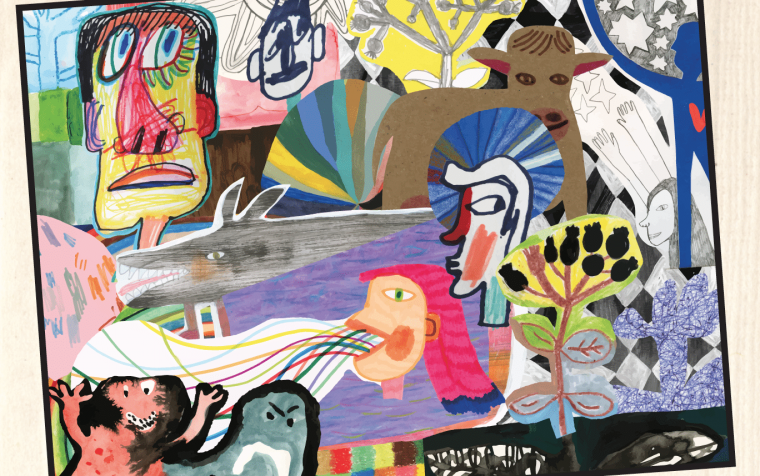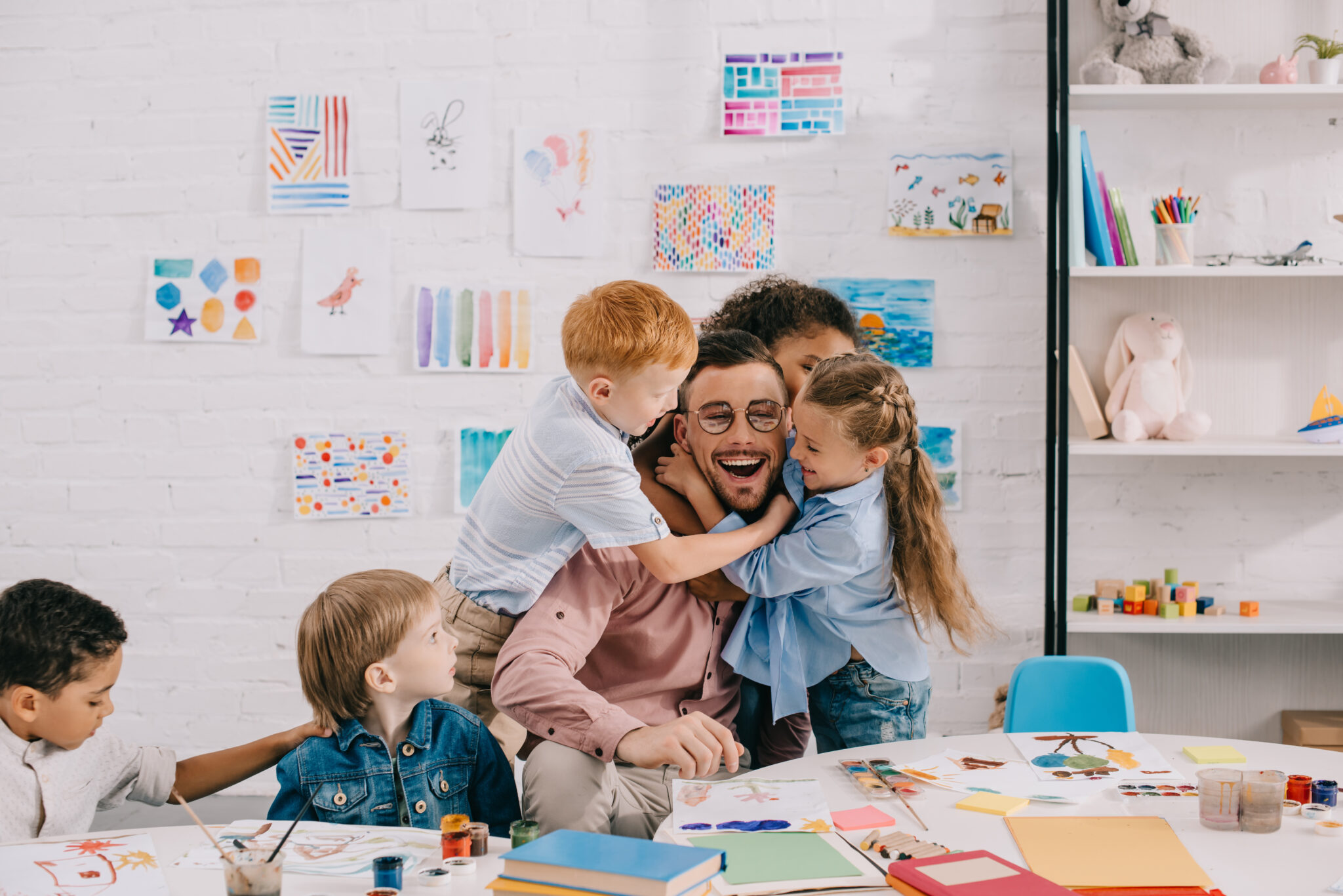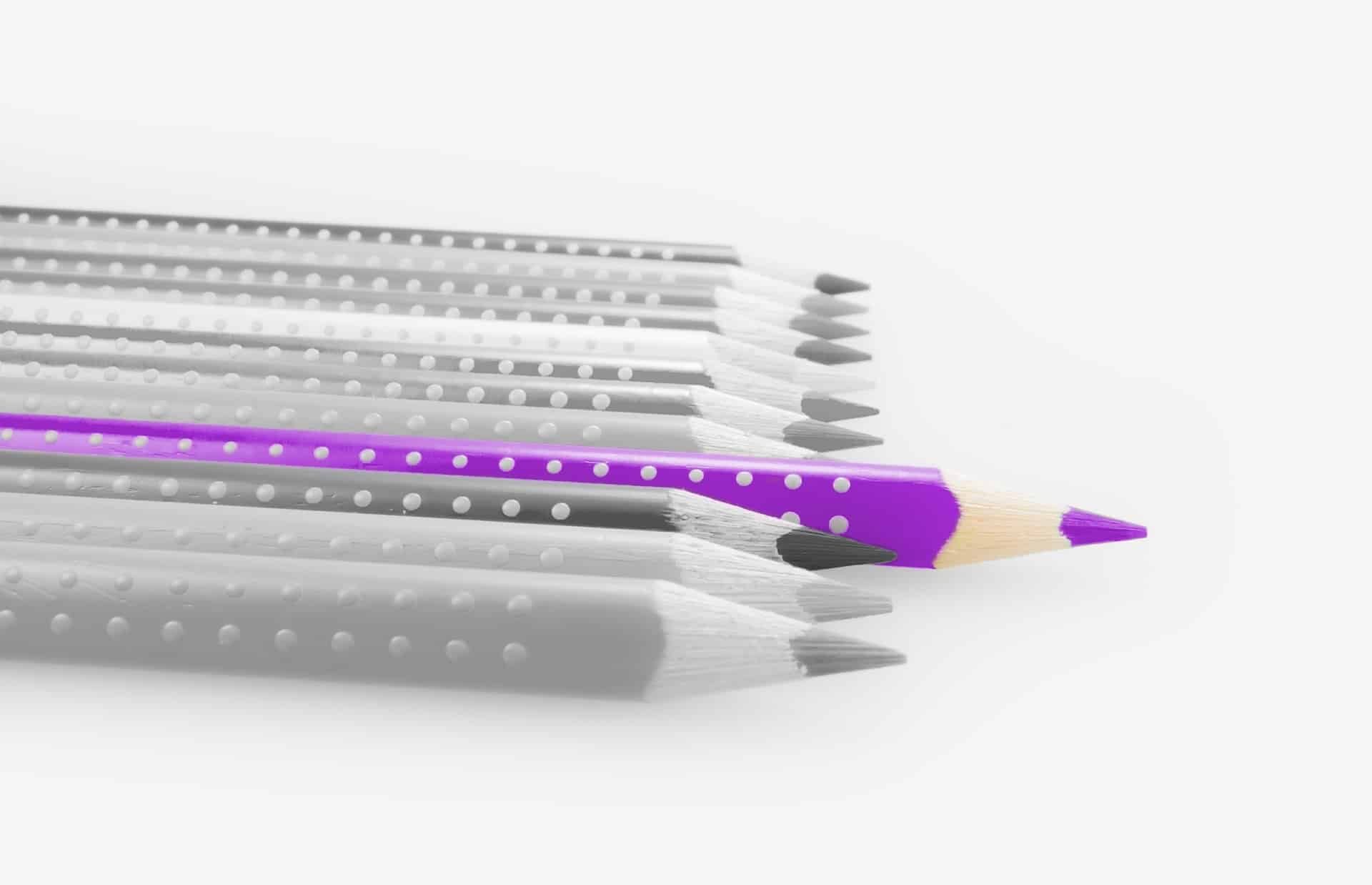Each year, the Research Division of the Texas Association for the Gifted and Talented (TAGT) chooses a topic to examine closer for presentation at giftED in the fall. With the passing of the Texas State Plan for the Education of Gifted/Talented Students this past June 2019, which now includes more requirements around social-emotional needs of gifted students, social and emotional development of the gifted has become a more pressing topic. The new State Plan states, “3.11 Develop and implement services to address the social and emotional needs of gifted/talented students and their impact on student learning” (Texas Education Agency, 2019). This requirement fell under the accountability section of Service Design. This means that social and emotional needs of students identified as gifted need to be addressed in order for programs to be in compliance.
The importance of social and emotional education for the gifted has been a topic of research for decades. An emphasis on this critical component of gifted education within the Texas State Plan is long-coming and will serve our gifted students well. Several researchers have supported this thinking by stating that social and emotional competence is more important when it comes to success in life than is having high cognitive abilities (Csikszentmihalyi, Rathunde, & Whalen, 1993; Gardner, 2011; Goleman, 1995). It is often assumed that gifted students with their advanced academic abilities can deal with emotional challenges, but research has proven this isn’t always the case (Peterson, 2009).
With the misconceptions concerning this multifaceted topic and the addition to the Texas State Plan, the Research Division felt that better understanding the topic of social and emotional development of the gifted might be a need among gifted educators. The division members selected journals pertinent to our field and found that research published within the last year focused on a variety of social-emotional topics.
In our 2019 Diving Deeper session of giftED we will present recent findings that address underachievement, self-esteem, social issues/values, and eating disorders. We begin with a 2019 study by Mofield and Peters that examined gifted students to determine if the mindset of achievers and underachievers differ. The study then examines mindset and perfectionism and then mindset, perfectionism, and academic attitudes as predictors of underachievement. Ranksley-Pavia, Grootenboer, and Pendergast (2019) examined bullying among those identified as twice-exceptional, as it is an issue that has not been examined before in academic research. Comparing gifted students to their normally developing peers in the areas of emotional intelligence, social value perception, and their sense of community is the focus of a study by Ozbey, Saricam, and Karduz (2018). Their study found that a high sense of community and high perception of social values is not just because of giftedness, but also due to the interaction of emotional intelligence with giftedness. Krafchek and Kronborg (2018) examined gifted identified females who have recovered from an eating disorder. The gifted females in this study identified academic issues as a contributing factor to their disorder whereas previous studies on eating disorders, not focused on the gifted, did not. Peairs, Putallaz, and Costanzo (2019) examined peer status and adjustment among gifted seventh-grade students. Among their many findings was an elevated amount of rejection due to peer victimization. Finally, we review the work of Lew and Harklau (2018) who studied the academic career of a gifted Latino student who did not reach his academic goals. Using the findings of this study, Lew and Harklau provided educators with strategies to use with underrepresented college-bound students.
Literature Review
Mofield, E., & Peters, M. (2019). Understanding underachievement: Mindset, perfectionism, and achievement attitudes among gifted students. Journal for the Education of the Gifted, 42, 107–134.
Participants in this quantitative research study included 264 sixth- to eighth-grade students identified as gifted who were enrolled in gifted programs from 11 suburban school districts in the southeastern United States. There were 160 identified as achievers (GPAs of 3.75 or above); 15 were identified as underachievers (GPAs less than 2.80; the bottom half of the class); and 80 students were neither achievers nor underachievers. This study purported to determine (a) if gifted achievers and underachievers differed on achievement attitudes, mindsets, and perfectionism; (b) whether or not mindsets, perfectionism, and achievement attitudes can predict underachievement; and (c) the relationships between mindsets and perfectionism among gifted adolescents (p. 116).
Participants completed the following Likert-scale questionnaires: (a) the School Attitude Assessment Survey-Revised (SAAS-R; McCoach, 2000; attitudes toward achievement), (b) the Mindset Assessment Profile Tool (Mindset Works, 2012; mindset) and (c) a version of the Goals and Work Habits Survey (Schuler, 1994; perfectionism).
The following findings were concluded by the research study:
- Gifted underachievers held higher fixed mindsets about intelligence and gifted achievers held higher growth mindsets about intelligence.
- Lower scores on motivation and self-regulation (attitudes toward achievement) were predictors of underachievement.
- Achievers scored higher on organization (a subconstruct of perfectionism) than did underachievers.
- Gifted students with a fixed mindset had higher scores on concern over mistakes and the more doubt of action (perfectionism).
In reviewing these findings, the following implications were apparent:
- Gifted underachievers should be taught about mental contrasting with implementation intentions (Oettingen & Gollwitzer, 2010) to develop more positive attitudes toward achievement. This will help students more readily focus on planning for the future by linking concrete, present actions to abstract, future goals.
- Underachievers need to be explicitly taught approach-coping strategies that will enhance self-regulatory behaviors in order to develop more positive attitudes toward achievement.
- Gifted learners need help with transitioning from fixed mindsets to growth mindsets. Educators can teach underachievers about the incremental theory, which proposes that intelligence is malleable and abilities can be further developed with effort.
- Teachers can instruct gifted learners about mastery goal orientation and support them when they display extreme levels of self-criticism to reduce perfectionism.
The limitations of this study are that the findings are applicable only to similar student populations (suburban, Caucasian gifted students); not all gifted underachievers have been included because many of these students don’t get identified for gifted programs; and different studies may have used different definitions of “underachiever.” In summary, significant implications of the study include provision of guidelines for redirecting underachieving gifted learners. Educators can assist underachievers by helping them understand and develop healthy mindset beliefs, teach and support them in developing and using organizational strategies, and assist them in development of self-regulation skills.
Ranksley-Pavia, M., Grootenboer, P., & Pendergast, D. (2019). Bullying and the unique experiences of twice exceptional learners. Gifted Child Today,42(1), 19–35.
The Australian authors of this article reported that “there are currently no known empirical studies that examine bullying in the lives of twice exceptional students” (p. 20). Available literature does reveal that gifted children with disabilities have been treated by peers and by educators in negative ways because of their differentness. Prolonged teasing or denial of services in special education because of their gifts or denial of gifted services because of their disability have led to low self-esteem issues, despondency, lack of friends, isolation, and in some cases, suicide (pp. 20–21).
Using a qualitative research approach and purposeful sampling, eight twice-exceptional students were identified. The call for students who had already been identified for gifted programs and already diagnosed with a learning disability was sent out through gifted and special needs organizations, pediatric and medical offices, and school communications. The recruitment process resulted in the selection of five males and three females, ages 9 through 16. Parents provided medical records to corroborate diagnoses. More than 28 interviews were conducted; approximately 3 to 4 interviews per participant were completed over a 6-month period in the homes of the participants (pp. 21–22).
All eight of the participants reported that they had been verbally and physically bullied during school by their peers and teachers. In some cases, participants reported that their peers destroyed their belongings or that they were alienated because they were perceived as “different.” Participants in the study reported being bullied by students in their gifted classes and noted that reports of being bullied were ignored by adults. New friendships made often ended abruptly because no one wanted to be bullied for being a friend to the bullied student.
Data from this study support the conclusion that bullying may be more prevalent among twice-exceptional students than previously thought (p. 32).
Ozbey, A., Saricam, H., & Karduz, F. A. (2018). The examination of emotional intelligence, sense of community, perception of social values in gifted and talented students. Journal of Educational Science & Psychology, 13, 64–79.
This study took place in Izmir, Turkey, and included 122 gifted and talented students as well as 246 non-gifted middle and high school students ranging from ages 12–17. The gifted students were identified as having IQs of more than 130. This study “mainly aims to determine the relationship between the levels of gifted students on emotional intelligence, perception of social values, and sense of community, and also to compare them with normal developing students” (Ozbey et al., 2018). Participants were surveyed using several instruments including the Revised Schutte Emotional Intelligence Scale, which examines emotional intelligence and five subfactors, the Perception of Social Values Scales to determine the students’ perceptions about social values, and the Sense of Community Scale. The “variables of giftedness, emotional intelligence, [and] perceptions of social values were carefully selected to determine causal relation” (Ozbey et al., 2018).
The study concluded that:
- gifted students’ emotional intelligence level was found to be higher than their normal peers;
- gifted students’ scores on the sense of community were significantly higher (p < .01) than their normal peers;
- the levels of perception of social values in gifted individuals were significantly higher than their normal peers (p < .01);
- there was a moderately positive relationship between emotional intelligence, perception of social values, and sense of community; and
- emotional intelligence “increases the individuals’ sense of community and perception of social values” (Ozbey et al., 2018, p. X).
Based on data gathered from participants in this study, authors concluded that the “high level of sense of community and perception of social values are not because of their giftedness, but due to their high emotional intelligence and the interaction between emotional intelligence and giftedness” (Ozbey et al., 2018, p. X).
After reviewing the findings, the authors discussed many studies concerning development of communities and emotional intelligence as it relates to giftedness and community. The authors quoted studies explaining the need for gifted students to have a strong sense of community in order to be satisfied with their academic success. One study that was cited in the article confirmed sensitivity to ethical issues and injustices known to be in the nature of gifted students. On the other hand, research was also quoted that claims “gifted students are less likely to feel alienated and strange at school, and have less difficulty making friends” (Ozbey et al., 2018, p. X).
Krafchek, J., & Kronborg, L. (2018). Stressful life events experienced by academically high-achieving females before the onset of disordered eating. Roeper Review, 40, 245–254. doi:10.1080/02783193.2018.1501783
This qualitative case study out of Australia investigated the rarely explored topic of disordered eating and academically high-achieving and identified gifted students. Previous research found that stress is often the predecessor to disordered eating. The researchers pointed out that although stressful events can bring about disordered eating, the stress exhibited by higher achieving and gifted students is often different from those of the regular population.
The researchers identified 14 females who had recovered from eating disorders and were also identified as being high achieving or academically gifted. Through a series of questionnaires administered to the participants, five areas of stressful events were identified as being predecessors to their eating disorder. The stressful events uncovered in this study were academic issues, social issues with female peers, family issues, physical and body issues, and social issues with boys.
What was interesting about the findings from this research, as compared to previous eating disorder studies, is that academic issues were an area identified as a stressful event with the high-achieving and gifted populations. Academic events were identified as academic pressure, perceived failure, perceived bullying or lack of regard from teachers, anxiety about future academic endeavors, pressures of a strict study routine, and perceived sudden increase in learning challenges. An academic event was not a stressful event preceding disordered eating in general population research. In fact, out of the five areas of stressful events found in this research, the only area all 14 participants had in common was academic events.
Although this study was conducted on female Australians, eating disorders are not limited by sex or country of origin. These limitations do not diminish the findings. The findings are important to the field of gifted education and the social and emotional development of these students. Educators need to be aware of the implications academic stress can have with regard to the onset of an eating disorder and use this knowledge to guide the healthy development of high-achieving and identified gifted students.
Peairs, K. F., Putallaz, M., & Costanzo, P. R. (2019). From a (aggression) to v (victimization): Peer status and adjustment among academically gifted students in early adolescence. Gifted Child Quarterly, 63, 1–16. doi:10.1177/0016986219838973.
In this study, Peairs et al., (2019) sought to contribute to the research on peer status and adjustment among gifted adolescents. Seventh-grade students participated in this study: 141 gifted and 186 nonidentified gifted students. Research suggested that elementary gifted students have a more positive peer status and adjustment levels than nonidentified students (Lee, Olszewski-Kubilius, & Thomas, 2012; Rimm, 2002; Robinson, 2008; Schneider, 1987). However, the degree to which this favorable status continues into adolescence is not well researched. Peairs et al. found that this high favorable status was not maintained in adolescence. Findings indicated that a positive social preference (how much someone likes you) was linked to a more positive perceived popularity and lower peer-victimization behaviors for both groups. Similarly, higher levels of social preferences correlated with higher prosocial leadership behaviors, higher grades, and lower levels of peer victimization. Peairs et al. reported similar findings for perceived popularity across both groups.
Researchers compared the nonidentified students to the gifted students, which resulted in some interesting findings. First, gifted students with higher standardized test scores had lower levels of perceived popularity. Second, gifted students with greater levels of positive popularity were also viewed as more overtly aggressive than their gifted peers. Third, higher levels of perceived popularity correlated positively to higher levels of substance abuse. But, the greatest difference between the groups was found in the greater levels of rejection that gifted students experienced as part of peer victimization.
Any advantages in peer status and adjustment that gifted students in elementary school had were not present in adolescence. The challenges to being socially adjusted increase when perceived peer status decreases for all students. Yet, the risks of negative behaviors are amplified in gifted youth who may also contend with gifted characteristics such as asynchronous development. Peairs et al. (2019) highlighted the need for interventions and understanding of the causes for peer victimization among gifted adolescents.
Lew, S., & Harklau, L. (2018). Too much of a good thing? Self-esteem and Latinx immigrant youth academic achievement. Journal of Advanced Academics, 29, 171–194. doi:10.1177/1932202×18760280
Educators are keenly aware of the importance of self-esteem in developing successful social and emotional learning for students. But can such efforts derail students from attainment of their academic goals? Lew and Harklau (2018) explored this phenomenon in relationship to a Latinx immigrant youth diaspora. In an earlier longitudinal 5-year multiple-case study, they examined the daunting odds of this population completing high school and entering college. Findings revealed roadblocks and misconceptions stemming from students’ high self-esteem that ultimately resulted in negative academic outcomes (Harklau, 2016). Expanding upon the data collection, this article presented an ethnographic study focusing on one academically gifted Latino who failed to reach his academic goals. This young Colombian immigrant came from a family of involved, middle-class parents with a strong parental social network. Although ambitions of engineering as a career prevailed throughout his high school career, athletic prowess took over his overall sense of “self.” The interplay of teacher/coach fostering self-esteem in athletics produced an unrealistic perception of his academic astuteness. In addition, the avoidance of challenging courses, the mistracking of classes by the district, and a naive trust of others handling his academic future left him unprepared for the competitive world of college admissions.
Based upon their findings, Lew and Harklau (2018) suggested strategies for educators working with college-bound youth from underrepresented populations. First, educators should remain in-check with their own and colleagues’ stereotypes that lead to unrealistic assessment of academic ability and readiness of athletes and/or immigrant youths. Intellectual ability may not equate to academic outcomes. To address possible academic deficits, school systems can provide elective courses to help students set college and career goals. Focus should be given in assisting students in identifying and enrolling in courses of academic rigor, and providing necessary support needed to meet the short- and long-term goals. Finally, formation of high school cohort-based educational programs can further serve as a means of support, comradery, and preparation for future success in the college setting.
What The Research Says: Social-Emotional Issues in Gifted Education PDF
Additional References
Csikszentmihalyi, M., Rathunde, K. R., & Whalen, S. (1993). Talented teenagers: A longitudinal study of their development. New York, NY: Cambridge University Press.
Gardner, H. (2011). Frames of mind: The theory of multiple intelligences. New York: Basic Books.
Goleman, D. (1995). Emotional intelligence: Why it can matter more than IQ. London, England: Bloomsbury.
Harklau, L. (2016). Bureaucratic dysfunctions in the education of Latino immigrant youth. American Journal of Education, 122, 601–627. doi:10.1086/687276
Krafchek, J., & Kronborg, L. (2018). Stressful life events experienced by academically high-achieving females before the onset of disordered eating. Roeper Review, 40, 245–254. doi:10.1080/02783193.2018.1501783
Lee, S. Y., Olszewski-Kubilius, P., & Thomas, D. T. (2012). Academically gifted students perceived interpersonal competence and peer relationships. Gifted Child Quarterly, 34, 111–115. doi: 10.1177/0016986212442568
Lew, S., & Harklau, L. (2018). Too much of a good thing? Self-esteem and Latinx immigrant youth academic achievement. Journal of Advanced Academics, 29, 171–194. doi:10.1177/1932202×18760280
Mofield, E., & Peters, M. (2019). Understanding underachievement: Mindset, perfectionism, and achievement attitudes among gifted students. Journal for the Education of the Gifted, 42, 107–134.
Oettingen, G., & Gollwitzer, P. M. (2010). Strategies of setting and implementing goals: Mental contrasting and implementation intentions. In J. E. Maddux & J. P. Tangney (Eds.), Social psychological foundations of clinical psychology (pp. 114–135). New York, NY: Guilford Press.
Ozbey, A., Saricam, H., & Karduz, F. A. (2018). The examination of emotional intelligence, sense of community, perception of social values in gifted and talented students. Journal of Educational Science & Psychology, 13, 64–79.
Peairs, K. F., Putallaz, M., & Costanzo, P. R. (2019). From a (aggression) to v (victimization): Peer status and adjustment among academically gifted students in early adolescence. Gifted Child Quarterly, 63, 1–16. doi:10.1177/0016986219838973.
Peterson, J. S. (2009). Myth 17: Gifted and talented individuals do not have unique social and emotional needs. Gifted Child Quarterly, 53, 280–282. doi:10.1177/0016986209346946
Ranksley-Pavia, M., Grootenboer, P., & Pendergast, D. (2019). Bullying and the unique experiences of twice exceptional learners. Gifted Child Today, 42(1), 19–35.
Rimm, S. (2002). Peer pressures and social acceptance of gifted students. In M. Neihart, S. M. Reis, N. M. Robinson, & S. M. Moon (Eds), The social and emotional development of gifted children: What do we know? (pp. 13–18). Waco, TX: Prufrock Press.
Robinson, N. M. (2008). The social world of gifted children and youth. In S. I. Pfeiffer (Ed.), Handbook of giftedness in children (pp. 33–51). New York, NY: Springer.
Schneider, B. H. (1987). The gifted child in peer group perspective. New York, NY: Springer.
Texas Education Agency. (2019). Texas state plan for the education of gifted/talented students. Austin, TX: Author.
Kristin L. Majority, M.Ed., is the Chair of the Research Division for TAGT. With more than 21 years in education, most of her career has been dedicated to the education of the gifted. She is a Ph.D. candidate at the University of North Texas focused on teacher perceptions of the gifted and teacher training.
Katie D. Lewis, Ed.D., is an associate professor of education at York College of Pennsylvania. She is actively involved with the TAGT Research Division and NAGC Professional Development Network. Her main areas of research interest include underrepresentation of gifted Hispanic students and teacher preparation.
Christina T. Dearman, Ph.D., serves as clinical assistant professor and the Pathway for Future Teachers Coordinator at the University of North Texas. With over 20 years in education, she has taught at the Pre-K through secondary level, served as an honors teacher and G/T specialist, and has taught various education courses at the undergraduate and graduate levels. Dr. Dearman serves as TAGT Board Treasurer and sits on the TAMS Advisory Board.
Debra A. Troxclair, Ph.D., associate professor at Lamar University, teaches graduate special education courses and gifted education courses, has more than 20 years of experience teaching at the K–12 level, and has taught at the university level for 16 years. She currently serves on the TAGT Board and the Council for Exceptional Children (CEC) TAG Division. She is a member of the Advisory Committee for the National Association for Gifted Children’s journal, Teaching for High Potential, and is on the editorial board for the Journal for the Education of the Gifted.
Joyce E. Kyle Miller, Ph.D., developed the gifted and talented graduate program at Texas A&M Commerce and teaches online courses designed to prepare teachers for certification in gifted education. Dr. Miller advises students pursuing master’s and doctoral degrees and coordinates the Secondary Education program. She served as TAGT Board Secretary.
Alex Kabli, MAT, is the Gifted and Talented Coordinator in Splendora ISD, a rural school district northeast of Houston. She is the elementary pull-out teacher and also coordinates the secondary SPARK program, which is focused on providing social and emotional support for gifted secondary students.






